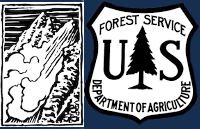A rider triggered a huge avalanche in the uppermost reaches of Targhee creek on a north facing slope at 9200'
Lionhead Range
A rider triggered a huge avalanche in the uppermost reaches of Targhee creek on a north facing slope at 9200'
A rider triggered a huge avalanche in the uppermost reaches of Targhee creek on a north facing slope at 9200'
Avalanches at Lionhead
We rode throughout most of the Lionhead area looking for and assessing a weak layer from late January. This layer produced avalanches last week that we saw. It also buried a rider last Sunday in Teepee Creek. It caught a ride yesterday in Cabin Creek.
- In most of our snowpits, the layer was gaining hardness
- In most of our snowpits, the layer was either not breaking in stability tests or was very stubborn.
We were scratching our heads because the layer seemed active but we could find any evidence that it was still a major problem, UNTIL
A rider triggered a huge avalanche in the uppermost reaches of Targhee creek. We discovered it on our way out. The best we could tell looking at their tracks was that they had no idea they triggered it, even though part of their tracks were swept away.
Also, on our way out we saw an avalanche in Airplane Bowl that had been triggered during the day today. This slide also broke on the persistent weak layers, 2-3' deep, 150' wide.
HERE'S THE DIMEMMA - On many slopes, the likelihood of triggering an avalanche on this weak layer is low. On some slopes, the likelihood of triggering one is high. Because the distribution of this problem is spotty, the damage is Moderate but that rating is deceiving.
HERE'S THE OTHER CHALLENGE - You won't see any obvious signs of unstable snow like cracking or collapsing. You probably won't see any red flags in a snow pit. There will be no warning until an avalanche happens.
TRAVEL ADVICE - We haven't been able to find a clear pattern for where these avalanches will happen and where they won't. It's a scary and tricky situation and these things are like booby traps. There are three options:
- Roll the dice and hope for the best, OR
- If getting onto steeper slopes, choose ones with a clean runout with no trees, rocks, or gullies and make sure your partners are watching you from a safe location, OR
- Ride only on slopes less than 30 degrees in steepness where most avalanches do not happen.
Wet snow - south facing slopes were getting very wet. We saw a few wet loose slides from yesterday near Targhee Peak. One south facing slope we crossed was wet for at least a foot or two into the snowpack.
Example of wet snow
Riding in this morning, we saw this older wet slide on the Portal Creek road down low at about 6400' in elevation on a south facing slope by lots of exposed rocks. For reference, Gallatin River is 5800' in this area.
We didn't see any fresh ones on our way out at about 2:30.
The most likely places for big wet slides are slopes or areas with exposed rocks and cliffs. Generally these wet slides happen a little predictably in the afternoon as the snow gets wet. We know what time of day they'll happen, but it's hard to know exactly when they'll release, so watch out when the snow is obviously wet if traveling under slopes like this.
You don't need to worry about them in the morning, when the snow is frozen. What a nasty avalanche with sticks, rocks, and dirt in it?
Persistent Slab Avalanches Tepee Basin
We got to ride into Tepee Basin with a pair of snowmobilers who were involved in an avalanche two days ago (2/23). The pair generously offered to join us and run us through the incident. It was an incredible opportunity to learn from each other. Read details about the slide.
The avalanche failed on the weak layer of facets that formed in late January. We also spotted another avalanche in similar, mid-elevation terrain likely triggered yesterday or earlier this morning. Both of these avalanches fit the pattern we've been seeing in Lionhead and the recent slide outside the forecast area in the Black Canyon area of Island Park. Other than the Black Canyon avalanche which is uncertain because we have not visited the site, the slides are taking place in mid-elevation terrain, smaller slopes with minimal wind-loading, and a thinner snowpack.
The snowpack in both the Tepee slides was thin relative to the average snowpack depth (129 cm).
Take Homes:
- You aren't good to go if you avoid the steep, upper-elevation, wind-loaded bowls. Steep slopes at mid-elevations harbor weak snow and have the potential for an avalanche.
- The persistent slab avalanche problem is alive and well. The epicenter of this problem is in the Lionhead area and the Southern Madison and Southern Gallatin Ranges.
- The issue with this avalanche problem is the distribution. It's nearly impossible to tell which slopes will slide and which ones won't. On many, the weak layer isn't so weak and the likelihood of triggering one is low. On other slopes, the weak layer is very weak and the likelihood of triggering one is up there.
At Lionhead a weak layer generally 2-3 feet deep is obvious in this snowpit wall.
Forecast link: GNFAC Avalanche Forecast for Thu Feb 20, 2025
